Blogs
CYMRY Appearing at Crescent Brewery in Nampa, Idaho Saturday August 17th at 9 pm
By Jaz Fagan, 2013-08-16
This is one of the best venues around, with great music, cold crafted beer right there at the brewery by Jerry and his staff, good times and good friends. Come get out of the heat and have a cold one served by none other than Jerry himself!  CYMRY plays Welsh/Celtic. Classic Pop and Rock, Originals, Folk and Brother Bob plays 20's-40's style music.
CYMRY plays Welsh/Celtic. Classic Pop and Rock, Originals, Folk and Brother Bob plays 20's-40's style music.
The king of rock and roll, Elvis Presley died on 16th August 1977 and he may well have been of Welsh descent.
* The name Presley is related to Preseli - the mountain range in Pembrokeshire.
* Members of Elvis's family had Welsh names, his mother was named Gladys and his dead twin, Jesse Garon Presley had a Welsh middle name.
* His maternal grandmother Doll Mansell may have come from the famous family of Mansel from Oxwich on the Gower peninsula.
In August 1405, Owain Glyndŵr held a parliament at Harlech Castle. Glyndwr had taken control of Harlech Castle in 1404 and made it his home and headquarters.
At the parliament of 1405, the Tripartite Indenture would have been discussed, which was the plan among Glyndwr, Thomas Percy, earl of Northumberland and Edmund Mortimer to divide England and Wales into three parts.
* Glyndŵr was to have control Wales, and the English portions of the Welsh Marches.
* Northumberland was to have received the north of England.
* Edmund Mortimer was to have received southern England.
The former Welsh Rugby Union President, Sir Tasker Watkins, was awarded the Victoria Cross for action on 16th August 1944, which saw him mount an assault on a German machine-gun post in northern France. After the war ended he took up law as a career and rose through the legal system to become deputy lord chief justice, acting as deputy to the attorney-general in the tribunal into the 1966 Aberfan disaster. Sir Tasker became president of the WRU in 1993, overseeing the switch from the amateur era to professionalism and the move from club to regional rugby in Wales. He stepped down on 26 September 2004.
Former Wales rugby coach Graham Henry had Watkins' citation pinned up on the wall of the Welsh changing room before international matches.
Today is the feast day of Saint Armel.
The period following the collapse of Roman rule , which left the Celtic Britons to fend for themselves, saw the emerging Welsh kingdoms, continually wrestling with the Anglo Saxon kingdoms of Mercia, Northumbria and Wessex to define their frontiers as well as having to deal with opportunist Irish raiders It was against this backdrop that many Celtic Britons left Britain and settled in the "Armorican" peninsula, later to be called Brittany. It was also at this time that many holy men, later commerated as saints, jorneyed between the Celtic countries, spreading the word of Christianity. Armel is said to have been a Breton prince, born to the wife of King Hoel of Brittany while they were living in Glamorgan in the late 5th century. He travelled from Wales to Brittany and founded several monasteries.
Legend has it that one day, a dangerous dragon appeared and began to prowl the district where the Welshman lived, attacking the inhabitants. Armel could no longer bear to witness the ravages of the monster, so he decided to meet the beast in its cave. Using sacred water, he lured the dragon out, whereupon it became as meek as a lamb. Tying a scarf around the neck of the monster, Armel led the dragon to the top of a mountain, from where he ordered it to jump to its death. To commemorate this event, the mountain was dubbed Mont-Saint-Armel.
The memory of Saint Armel as well as many other saints was kept alive by the pilgrimage cult that produced pilgrim badges in his honor. The use of pilgrim badges flourished in Europe during the 14th and 15th centuries.
Born on this day 1888 in Tremadog, Caernarfonshire
Thomas Edward Lawrence, who later became known as "Lawrence of Arabia"
Lawrence gained fame as a leader of an Arab revolt against the Ottoman Empire during World War One. He had thrown himself into Arabic culture to befriend and sympathise with his Arab partners and it was this ability to identify with the Arab peoples which made him a successful military leader.
Media contact:
Bob Titley, The Robert Titley Consultancy
Tel: 917-690-8418
Email: roberttitley@aol.com OR Bob@theroberttitleyconsultancy.com
Vacation like a Royal
Anglesey Experiences for Royal Enthusiasts
New York, NY, August 15, 2013 - Vacation like a royal on the Isle of Anglesey where William and Kate, the Duke and Duchess of Cambridge, have spent the first two years of their marriage. The islands scenery, budding culinary scene, and traditional Welsh hospitality have charmed the couple, and travelers can follow in their footsteps with these five Anglesey experiences for royal enthusiasts.
How to vacation like a royal:
1. Walk the Wales Coast Path The walking path stretches 870 miles around the shores of Wales; 125 of which wrap around Anglesey. On average, it takes 12 days to complete but visitors can do short trails with stops at South Stack lighthouse, the Menai Suspension Bridge, the sea cliffs at Rhoscolyn, and Llanddwyn Island the place dedicated to the Welsh Patron Saint of lovers.
2. Take a day tour of Anglesey Excursions North Wales is a tour company that offers an Amazing Isle of Anglesey day tour stopping at: the RAF Valley air force base (where Prince William works), South Stack nature reserve and lighthouse, Plas Cadnant Hidden Gardens, and the Menai Suspension Bridge which features views across the Menai Straits.
3. Visit a stately home Plas Newydd is set on the Menai Straits and boasts views of Snowdonia. The country-house currently belongs to the Marquess of Anglesey. While there, take a walk through the gardens or have afternoon tea its a favorite of the Duke and Duchess.
4. Explore a castle Beaumaris Castle is a medieval fortress that dates back to the 13 th century when King Edward I commissioned it to defeat the Welsh rebels. It is surrounded by stone walls and a moat, and it belongs to the Castles and Town Walls of King Edward in Gwynedd UNESCO World Heritage Site.
5. Stay in shadows of nobility Visitors can discover the variety of accommodation options on Anglesey from the private-estate turned boutique, five-star accommodation at Plas Rhianfa, to the 15 th century coaching inn and pub at Ye Olde Bulls Head Inn. They can also rent a farmhouse just like the Duke and Duchess of Cambridge Coastal Holidays offers cottage rentals on the island.
On August 14 th , 2013 Prince William, Duke of Cambridge, made his first public appearance at the Anglesey Show an agricultural show in North Wales since the birth of his son. He described his experience living on the Isle of Anglesey saying, I know that I speak for Catherine when I say that I have never in my life known somewhere as beautiful and as welcoming as Anglesey. The views across the Menai Straits are undoubtedly among the most stunning in the British Isles. I know that both of us will miss it terribly when my search and rescue tour of duty comes to an end next month and we have to move elsewhere." He added, from the bottom of my heart, thank you for making my wife and me so welcome when we arrived here, as you do thousands of visitors each year.
Request more information about Wales by contacting Visit Wales by E-mail: walesinfo@visitbritain.org and online at www.usa.visitwales.com : http://americas.visitwales.com/?utm_source=pressrelease&utm_medium=pressrelease&utm_campaign=vacationlikearoyal
Resources:
Wales Coast Path http://www.walescoastpath.gov.uk/explore_by_area/isle_of_anglesey.aspx
Excursions North Wales http://excursionsnorthwales.co.uk/
Plas Newydd http://www.nationaltrust.org.uk/plas-newydd/
Beaumaris Castle http://cadw.wales.gov.uk/daysout/beaumaris-castle/?lang=en
Plas Rhianfa www.plasrhianfa.com
Ye Olde Bulls Head www.bullsheadinn.co.uk
Coastal Holidays - http://www.coastalholidays.net/
In August 1284, following the deaths of Llywelyn and Dafydd ap Gruffyd, King Edward I of England held court in the Welsh llys (royal court) at Abergwyngregyn.
The area first enters the history books in AD 60, when Suetonius Paulinus led twenty-five thousand men from their base on the bank of the river Dee to invade Anglesey, which was then the stronghold of the druids. The Roman soldiers forded the sands at this point and Tacitus later recorded the savage massacre of the local people that took place. The road that the Romans built linking Chester to Segontium (Caernarfon) looped round the garth.
The original name of the settlement was Garth Celyn and is positioned on a raised promontory of land on the fringe of Snowdonia, overlooking the Irish Sea with wide sweeping views across the Menai Strait to Anglesey and beyond. To the east of the Llys was the Cistercian Monastery of Aberconwy and to the west the cathedral city of Bangor.
About the year 1200, Prince Llywelyn ap Iorwerth made it his home as did his grandson Llywelyn ap Gruffydd. It is Garth Celyn that John Peckham, Archbishop of Canterbury, travelled to in November 1282 to negotiate between Llywelyn and Edward. Llywelyn was offered a bribe - £1000 a year and an estate in England if he would surrender the Welsh Nation into the hands of the King. His refusal and his reasons for doing so, were dated from ‘Garth Kelyn’.
After the Anglo Norman Conquest, the name Garth Celyn continued in local use but was not used by the English administration. Instead the settlement Aber Garth Celyn adjacent to the royal home became officially known by the administrators simply as Aber, ‘Estuary’ with its identity removed and later replaced with Abergwyngregyn, ‘Estuary of the White Shells’. The Welsh royal home was occupied and became a Crown of England property: Edward and his entourage stayed there in 1283 and again in 1284, but from that time on no member of the English royal family again set foot on it and it gradually fell into ruin.
The 15th August is celebrated as V-J Day (Victory over Japan Day) the day in 1945 that Japan surrendered, effectively ending World War II. However, the campaign to push the Japanese out of Burma was the longest and bloodiest of World War II. This is emphasised by the following orders that were given to the Japanese soldiers.
'Continue in the task till all your ammunition is expended. If your hands are broken, fight with your feet. If your hands and feet are broken, fight with your teeth. If there is no breath left in your body, fight with your spirit. Lack of weapons is no excuse for defeat.'
Japan had long resented the British presence in the Far East and with Hitler certain of victory in late 1941, they invaded Malaya and Burma to seize raw materials such as rubber and oil. British staff officers ridiculed the idea that the Japanese could be a serious fighting force.and would be no match for a modern European army. Then came the brutally effective Japanese attack on the American fleet at Pearl Harbour, on December 7, 1941. Japanese bombers were in action again three days later, sinking the battleship “The Prince Of Wales” and the battle-cruiser Repulse in the South China Sea with the loss of about 1,000 men. The news reverberated around the world and was followed almost immediately with humiliating news that Singapore had surrendered, which was followed by two and a half years of disaster and defeat for the British Army, as it retreated northwards through Burma in the face of a terrifying enemy. The Japanese completed their advance through Burma by late May 1942 and virtually all the remaining Allied troops had retreated north over the Indian border.
However, in the end, Japanese industrial capacity simply could not sustain a long war and when Germany surrendered, the Allies were able to release all of their weaponry for the war in South-East Asia, which in August 1945, culminated with the devastating strikes of Hiroshima and Nagasaki.
Born on this day 1856 in Holyton, near Motherwell, Scotland
Kier Hardie, who was one of the Labour Party's founders and its first leader. He became the MP for Merthyr Tydfil and Aberdare on 2nd October and was one of the two initial Labour Party MP's to sit in The Houses of Parliament.
Hardie came from a poor household and although he had no formal education, his parents taught him to read and write. He began to work in the local coal mines and being a devout evangelical Christian and a supporter of the temperance movement, he became skilled at public speaking. This then led to him becoming a spokesman for his colleagues in their disputes with management. However, this led to him being seen as an agitator and he was blacklisted by the management. Hardie therefore began to work for the miners' union and this led to him being involved in many of the strikes of that time. He and his wife Lillie also ran a soup kitchen from their own home.
Originally a Liberal, Hardie soon became disillusioned by the party's lack of emphasis on helping the working man and began to stand for parliament as an independent, being elected in 1892 as an MP for West Ham South in. Then in 1893 he formed and became leader of the Independent Labour Party
In 1894 251 miners were killed after an explosion at a mine in Pontypridd and after his request for a message of condolence to be sent to the families of the berieved was refused by parliament and a message of congratulation to Buckingham Palace on the birth of the future Edward VIII agreed, Hardie delivered a vitriolic attack on the monarchy, which resulted in him losing his seat at the next election in 1895.
Hardie spent the next five years laying the foundations of the future Labour Party and returned to parliament in 1900 as an MP for the Labour Representation Party, which in 1906 changed its name to the Labour Party, with Hardie becoming its first leader.
Hardie, a firm pacifist during World War One, battled all his life for the oppressed and under-privileged. He was a supporter of female emancipation, home rule for India and the ending of segregation in South Africa. However in 1915, worn out by his help for others, Hardie suffered a series of strokes and died. He was buried in his native Glasgow but has never been forgotten in Merthyr and Aberdare where he is still revered as Britain's first truly socialist MP.
Born on this day 1908 in Swansea
Wynford Vaughan-Thomas CBE - newspaper journalist and radio and television broadcaster.
Picture is of a memorial to Wynford Vaugan Thomas, in Welsh slate on the slopes of Moel Fadian, one of his favourite locations, near the village of Aberhosan in Powys. It highlights all 13 peaks in Wales above 3,000ft .
Thomas's mother Morfydd Lewis, was the daughter of Daniel Lewis who was one of the leaders of the Rebecca riots in Pontardulais. He Was a contemporary of Dylan Thomas at the Bishop Gore School, Swansea,before graduating from Oxford. Thomas then joined the BBC and in 1937 gave the Welsh-language commentary on the Coronation of King George VI and during World War II, he established his name and reputation as one of the BBC's most distinguished war correspondants. His most memorable report was from an RAF Lancaster bomber during a real bombing raid over Nazi Berlin. Other notable reports were from Lord Haw Haw's broadcasting studio and the Belsen concentration camp. Then in 1953 he was one of a team of BBC commentators on the Coronation of Queen Elizabeth II.
In 1967, after leaving the BBC, he was one of the founders of Harlech TV, now ITV Wales, being appointed Director of Programmes, as a frequent TV broadcaster himself throughout his early career with the BBC he had adopted the required BBC accent of the time but employed his more natural native Welsh accent to even better effect in his later career. In May 1970, when President of the Council for the Protection of Rural Wales, he officially opened the Pembrokeshire Coastal Path.
Born this day 1951 in Tredegar
Berwyn Price - former Welsh international athlete (110 metre hurdles). Price was a double Olympian and won the gold medal at the 1978 Commonwealth Games. He later became Head of Sports Tourism for Swansea and Assistant Director of Leisure for Swansea City Council.
Please stop bastaradising out beloved Welsh Dragon. No self respecting Welsh person would USE Y Ddraig in this manner. The Welsh Dragon is
Comment
-
 Comment by Ceri Shaw 2 hours ago
Comment by Ceri Shaw 2 hours ago - Delete Comment
-
 Comment by Elin 3 hours ago
Comment by Elin 3 hours ago - Delete Comment
Ceri, It is insulting and juvenile that you use the symbol for Wales and change it for your own commercial purposes. I am simply letting you know how I and many Welsh feel about our symbol.Ianswered Mona's point when I wrote that the site does not interest me and that I do not peruse it. I happened to open the email regarding your book store to see the Ddraig holding a book. I thought "What the hell is wrong with these people that they are just bandying around the image of the Welsh Dragon, dressing it up for their commercial reasons and generally insulting this symbol of Wales. It seems that you have adopted the American habit of using things willy nilly, with no thought of the meaning of the symbol. The blue dragon and all the other different color dragons do not represent Wales of the USA. Please use your imagination and come up with something more creative. Perhaps you could launch a competition for a good logo that does not involve the Blue Dragon.
-
 Comment by Ceri Shaw 3 hours ago
Comment by Ceri Shaw 3 hours ago - Delete Comment
No Elin.... we have adapted it in order to provide a logo for a site which promotes Welsh culture in the US. Your use of the term 'bastardise' ( on the odd occasion when you can spell it correctly ) is both insulting and juvenile. Incidentally, perhaps you should answer Mona's point. Did you only just notice the logo ( it has been there for five years ) and what about the NAFOW Dragon? Is that also a 'bastardisation'? I would be interested to know why you decided to launch your petty tirade at this precise moment?
-
 Comment by Elin 3 hours ago
Comment by Elin 3 hours ago - Delete Comment
True that I dislike the use of the Red Dragon for commercial purposes and with the cup in the picture it's even more distasteful that the Welsh is grammatically incorrect. The logo is insulting and would never be adopted by a Welsh person.
-
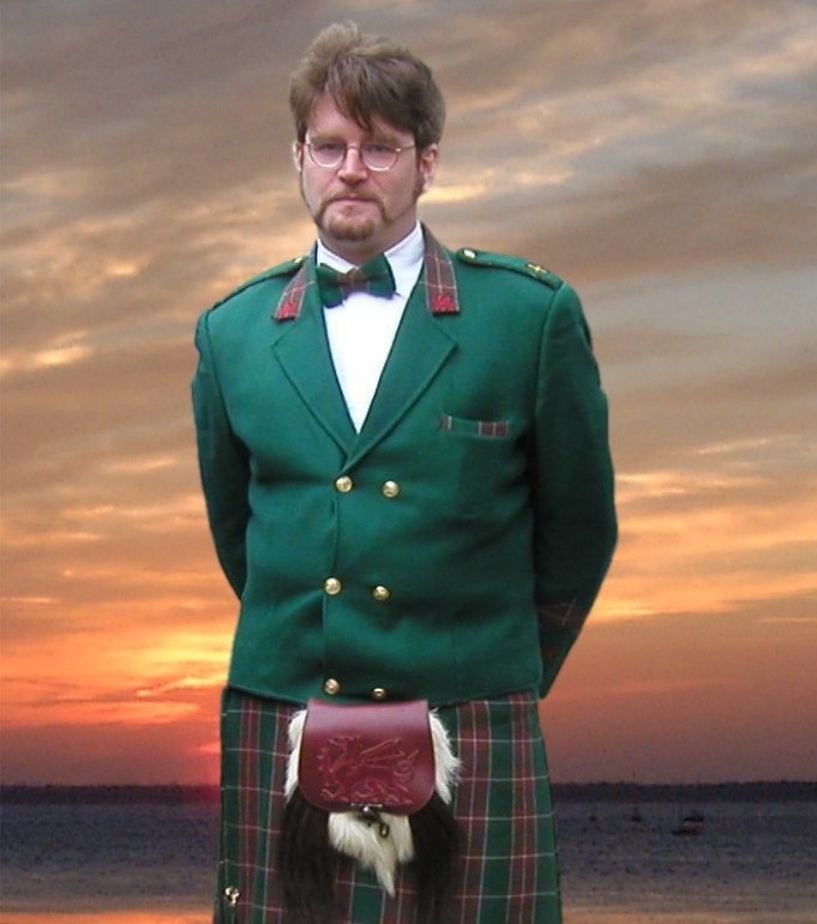 Comment by ArthMawr 3 hours ago
Comment by ArthMawr 3 hours ago - Delete Comment http://americymrunet.jamroomhosting.com/data/media/0/0/Ning_Media/blogs/1/1557_blogs.jpg"><img class="align-full" src=" http://americymrunet.jamroomhosting.com/data/media/0/0/Ning_Media/blogs/1/1557_blogs.jpg" ; width="300"/></a></p>">
Here's another one for you to fume about
-
 Comment by ArthMawr 3 hours ago
Comment by ArthMawr 3 hours ago - Delete Comment
What a load of nonsense. The logo works great. I am born Welsh and see no insult in the use of the dragon in this way.
-
 Comment by Elin 3 hours ago
Comment by Elin 3 hours ago - Delete Comment
Ceri, Whoa big words! My point is that you have taken the Welsh Dragon and bastardized it for your own purpose. I would hope that you would have a little more imagination than to use thispoor excuse for an emblem.
-
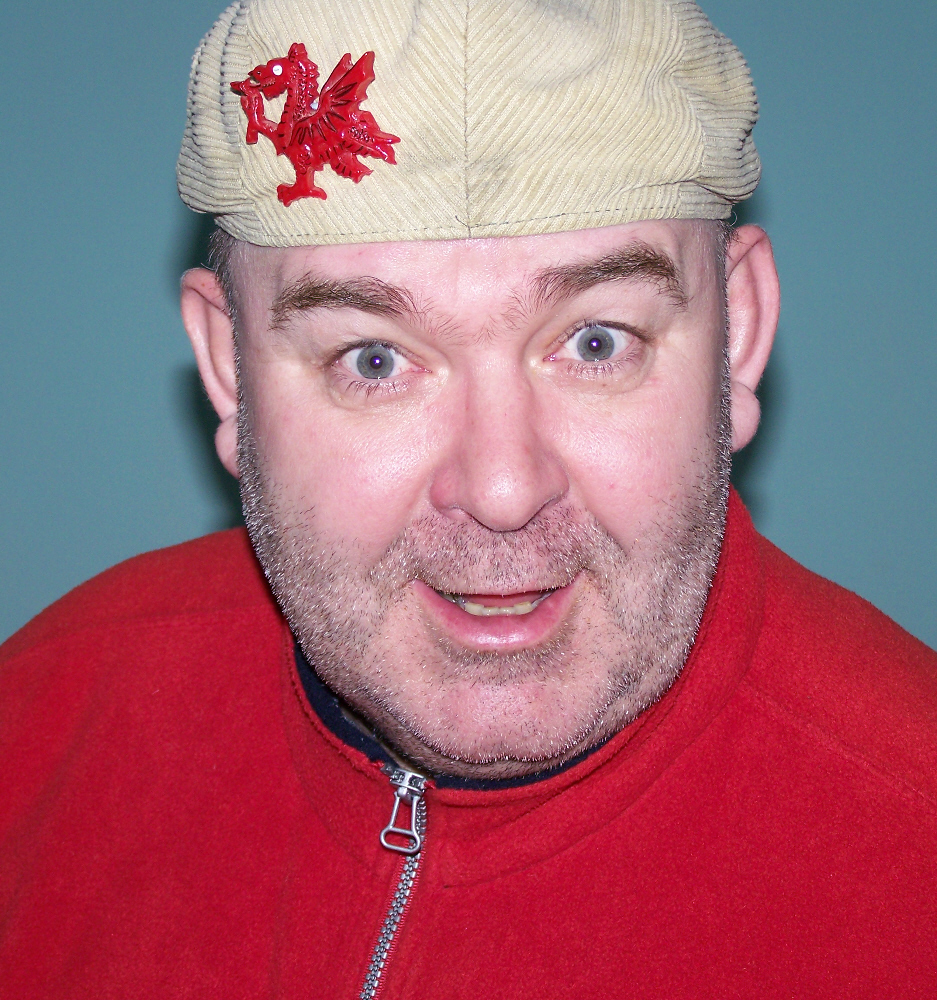 Comment by Ian Price 3 hours ago
Comment by Ian Price 3 hours ago - Delete Comment
Who is the Elin of such troubled thought. Should she be sent up the Nile?
-
 Comment by Ian Price 3 hours ago
Comment by Ian Price 3 hours ago - Delete Comment
Are you talking to me?
-
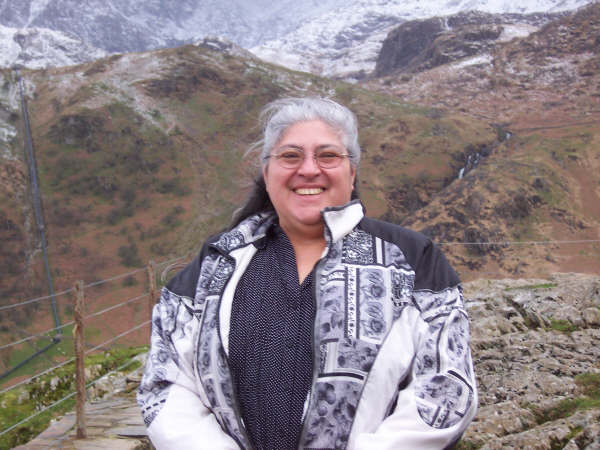 Comment by mona everett 3 hours ago
Comment by mona everett 3 hours ago - Delete Comment http://www.nafow.org/WNAA_NAFOW/images/wnaa_header21_wh.gif"; alt="wnaa" style="width: 471px; height: 154px;"/></p>">
Here is another example Elin can complain about. This organization has Canadians, Americans, expats, and people who are native to, and living in, Wales on the Board. This is the logo everyone loves. The Americymru logo isn't supposed to represent Wales--it represents Wales and America and the Welsh in America and Welsh expats in America. If we wanted to represent Wales, we'd use the Draig Goch. Saying that, I have seen many incarnations of the Welsh dragon in use in Wales--just take a look in any gift shop. I am not sure what she is complaining about--especially if she has been a member of this site for years. Did she just notice it?

Please stop bastaradising out beloved Welsh Dragon. No self respecting Welsh person would USE Y Ddraig in this manner. The Welsh Dragon is
Comment
-
 Comment by Ceri Shaw 3 hours ago
Comment by Ceri Shaw 3 hours ago - Delete Comment
The Red Dragon is the national emblem of Wales and the dragon at the top of the page is the logo of this site. I fail to see that you have made a point of any kind in your last post. It is every bit as vacuous as your previous utterances imho
-
 Comment by Ian Price 4 hours ago
Comment by Ian Price 4 hours ago - Delete Comment
A fight with a feather.
-
 Comment by Elin 4 hours ago
Comment by Elin 4 hours ago - Delete Comment
Ceri and Gaabi, Again I say that the RED Dragon is the symbol for Wales, not the blue dragon or the tuqquoise dragon or the USA Flag Dragon. It would be great if you could take the time to design something meaningful that does not bastartize the Welsh Dragon. As for my ass, it's in great shape from walking miles in the mountains every day. Also, you know nothing of my activities in promoting Wales or the language. It is a mistake for you misuse the symbol for Wales, which is, AGAIN, a Red Dragon. The reason I have not been active on your site isthat it does not hold much interest for me.
-
 Comment by Ceri Shaw 4 hours ago
Comment by Ceri Shaw 4 hours ago - Delete Comment http://www.bkserv.net/images/Smile.gif"/></p>;">
Diolch Matthew....and very well put if I may say so

-
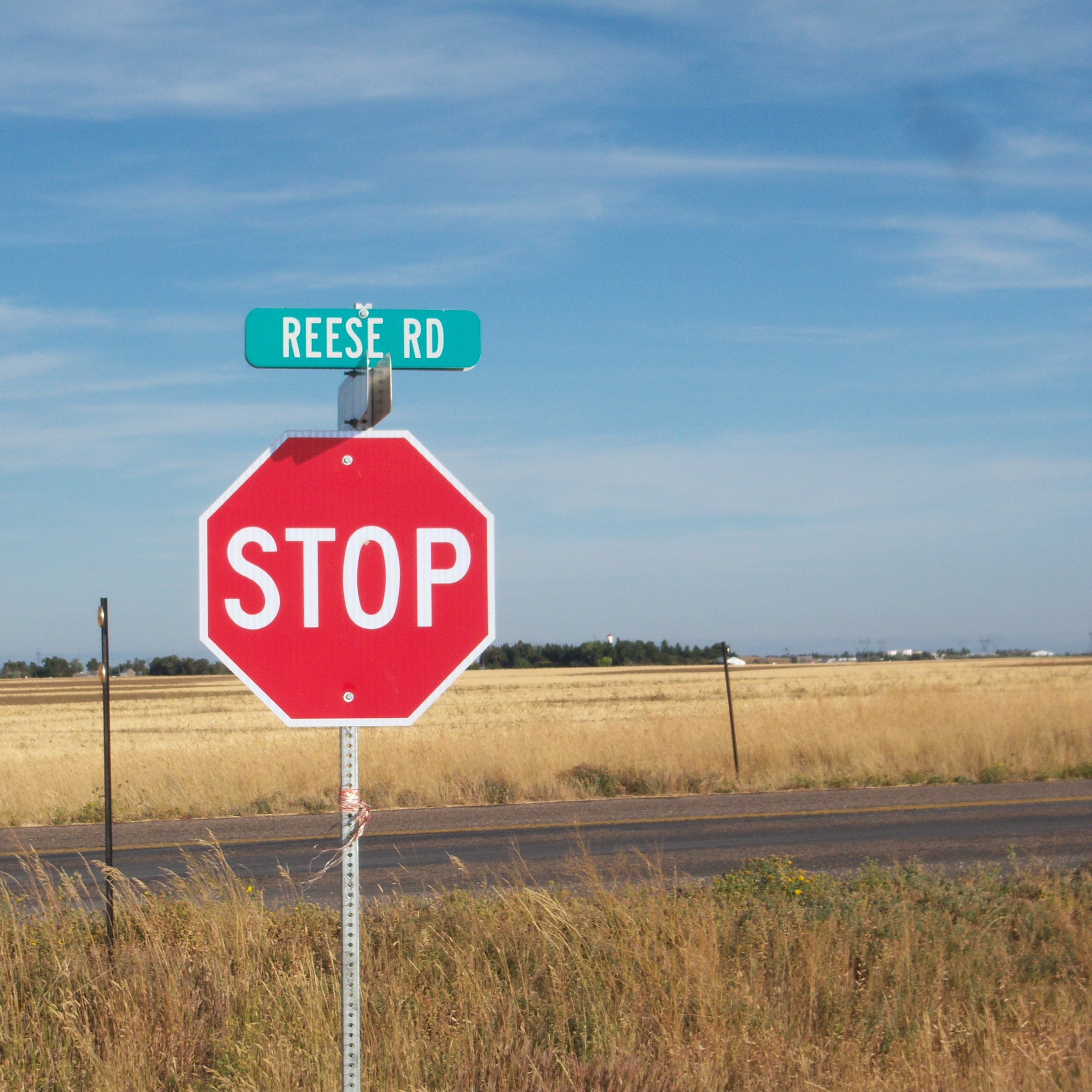 Comment by Matthew Reese 4 hours ago
Comment by Matthew Reese 4 hours ago - Delete Comment
(Also, as Americans (those of us who are), we believe in freedom of association. You can always leave...)
-
 Comment by Matthew Reese 4 hours ago
Comment by Matthew Reese 4 hours ago - Delete Comment
Surely there is room for folk to appreciate Wales while being so removed as we are.
Can we not love the country of our Birth AND the country of our ancestors?
Cannot we, like so many of Americas Founding Father, Carry within our hearts a devotion to this, our land, and to Welsh the love of Freedom that sings within our very souls.
And can anyone imagine an image that says 'Americymru' more?
-
 Comment by Ceri Shaw 4 hours ago
Comment by Ceri Shaw 4 hours ago - Delete Comment
Additionally I resent your 'commercial purposes' slur. This site besides consuming almost every waking hour of my day some days, costs thousands of dollars to maintain ( when taken together with the various activities and events which we promote in association with it ). Your misinformed and vindictive remarks today have been your sole contribution to this site and its activities in 5 years as a member.
-
 Comment by gaabi 4 hours ago
Comment by gaabi 4 hours ago - Delete Comment
I am the creator of the AmeriCymru logo and the book dragon logo for the PSU event which you emailed Ceri Shaw to complain about. I am an American and co-founded this site with Ceri, six years ago. I do all the graphics and multimedia we use on all our sites.
Since it was created, this logo has been viewed by millions of people and you are one of TWO to complain about it, the other person was an American offended that the US flag was inside the dragon. I hear and understand your objection. My opinion is completely different and, while it is your option, I disagree with everything that you have said. No national symbol is "sacred," the dragon is used "commercially" by Welsh people all over Wales, all the time, in hundreds, maybe thousands, of examples and probably has been since almost the time it was created. If you really think "no true Welsh person" would change the dragon, you must be the only "true" Welsh person on earth, in your mind.
I am sorry that you are offended and that my admiration for the land of your birth and its culture offends you, perhaps I ought to end my mainly thankless, unpaid, voluntary efforts and every person like yourself, whose ass I haven't seen off the chair promoting Wales and Welsh heritage, can do a better job than I have.
And, ohmygod, "Y Beibl" has been edited and changed ENDLESSLY in the last couple thousand years and I couldn't possibly list the many different versions of it that exist today.
-
 Comment by Ceri Shaw 4 hours ago
Comment by Ceri Shaw 4 hours ago - Delete Comment
With reference to my earlier post I should add that Gaabriel designed both logos.
-
 Comment by Ceri Shaw 4 hours ago
Comment by Ceri Shaw 4 hours ago - Delete Comment https://www.google.com/search?safe=off&hl=en&site=imghp&tbm=isch&source=hp&biw=1024&bih=605&q=welsh+dragon&oq=welsh+dragon&gs_l=img.12...0.0.0.2578.0.0.0.0.0.0.0.0..0.0....0...1ac..25.img..0.0.0.8s1GY_tntQ4"; target="_blank"> https://www.google.com/search?safe=off&hl=en&site=imghp&...</a></p> ; <p>And what do we make of this heresy ( again designed by Welsh designers )?</p> <p><a href=" http://www.anglesey.info/images/Rhondda%20Photos/Mametz%20Wood,%20Flatiron%20Copse%20Cemetery,%20Welsh%20Dragon.jpg" ; target="_blank">http://www.anglesey.info/images/Rhondda%20Photos/Mametz%20Wood,%20F...%3C/a%3E%3C/p%3E"> http://www.anglesey.info/images/Rhondda%20Photos/Mametz%20Wood,%20F...</a></p> ; <p></p> <p>Clearly this is the wrong shape AND the wrong shade of red!!!!</p> <p>How dare you insist that everyone else in the world besides you is wrong. In my opinion you owe my partner Gaabriel Becket a personal apology. She is not Welsh but she IS of Welsh descent and over the last 5 years for no reward, she has done more to promote Wales than you have achieved in your lifetime.</p> <p></p>">
Elin...you do not come on to someone elses site....make ignorant and insulting remarks and then tell others to be silent. You joined this site in 2008 and you have contributed nothing since until today.
I have spoken to a number of people about your post and your original email and all are agreed ( Welsh and American alike ) that it is preposterous. Please take a look at the google image page for 'Welsh Dragon'. You will find that there are silhouettes filled with black and white and occasionally green or yellow backgrounds....most of them designed by Welsh designers.
https://www.google.com/search?safe=off&hl=en&site=imghp&...
And what do we make of this heresy ( again designed by Welsh designers )?
http://www.anglesey.info/images/Rhondda%20Photos/Mametz%20Wood,%20F...
Clearly this is the wrong shape AND the wrong shade of red!!!!
How dare you insist that everyone else in the world besides you is wrong. In my opinion you owe my partner Gaabriel Becket a personal apology. She is not Welsh but she IS of Welsh descent and over the last 5 years for no reward, she has done more to promote Wales than you have achieved in your lifetime.
Comment
-
 Comment by Elin 4 hours ago
Comment by Elin 4 hours ago - Delete Comment
For those of you wondering, I meant bastardising OUR Welsh Dragon. And to the American who designed the logo, it's obvious to me that you care nothing for the Red Dragon and what it means as a symbol to the people of Wales. The Kokopelli is much used and abused by a bunch of white people who 'don't understand' why the native americans object to the misuse of a symbol representing a god to the natives in Arizonal. But what the heck, as long as these white folk are making money on t-shirst and other trivial items that bear the image of the kokopelli in various outfits and poses!!!
-
 Comment by Elin 5 hours ago
Comment by Elin 5 hours ago - Delete Comment
Mae'r Ddraig yn bwysig i'r Cymry, ac yn ei ffurff wreiddiol. Enough of this changing the dragon for commercial purposes. Yes Y Ddraig was brought to us by Macsen Wledig, a Roman. The Romans also brought us Y Beibl,which isunchanged to this day. The use of the dragon in different colors is obviously something only an American would do. I reiterate that no true Welsh person would change our beloved Ddraig Goch (RED dragon). Also, Sior, don't put words in my mouth, I care not for the three feathers as a symbol of Wales.
-
 Comment by Ceri Shaw 5 hours ago
Comment by Ceri Shaw 5 hours ago - Delete Comment
That's easy to answer....basically the logo on this site and the Welsh American Bookstore.
-
Comment by Swansea Jack 5 hours ago
- Delete Comment
If I were Elin, I'd be shouting 'tort' over the 'ad hominem attack' rendered a few hours ago! However, I am STILL bursting with curiosity over just what 'manner of use of Y Ddraig' prompted her plea.
-
 Comment by Mike Watkins 11 hours ago
Comment by Mike Watkins 11 hours ago - Delete Comment <p><strong><a rel=nofollow href=" http://www.bbc.co.uk/wales/history/sites/themes/society/flag_officialemblem.shtml" ; target="_blank">Designed: 1959</a></strong></p><p>Consecrated: ???</p><p><a href=" *QTBh9*eaF1dMj9xN8UOQgd*PYNh*HzDE1jYOgdy*1ottBAtuJrpoWFX5dwouOU*C192dC6v7olOi/flag_welsh02_446.jpg" target="_self"><img src=" *QTBh9*eaF1dMj9xN8UOQgd*PYNh*HzDE1jYOgdy*1ottBAtuJrpoWFX5dwouOU*C192dC6v7olOi/flag_welsh02_446.jpg" width="446" class="align-full"/></a></p><p></p>">
Here is the flag:-
Consecrated: ???
-
 Comment by Sior Child 11 hours ago
Comment by Sior Child 11 hours ago - Delete Comment http://i925.photobucket.com/albums/ad93/ucsycybersmiley/102.gif"/></p>;">
Elin, if you knew anything about your "sacred" dragon, you'd know it was adopted by Henry Tudor from an earlier Romano-British symbol. I suppose you also think the Three Feather's are also a sacred Welsh symbol, right? Wrong, they're German and a symbol of the Heir to the Throne of England. Learn some bloody history, you fool.

-
Comment by Swansea Jack 12 hours ago
- Delete Comment http://americymru.net/group/threewordstorygroup"; target="_self">this link</a> may suit you. <img src=" http://www.bkserv.net/images/Grin.gif"/></p> ;">
An afterthought: If a 140 character limit is too challenging for anyone, may I suggest that this link may suit you.

-
Comment by Swansea Jack 12 hours ago
- Delete Comment http://www.bkserv.net/images/Tongue.gif"/></p>;">
. . . or if the misspellings in 'bastar a dising ou t ' are anything to go by, maybe 'scared' - not 'sacred'!

-
 Comment by Ceri Shaw 13 hours ago
Comment by Ceri Shaw 13 hours ago - Delete Comment http://www.bkserv.net/images/Smile.gif"/></p>;">
Incidentally the next word would have been 'sacred'

-
 Comment by Ceri Shaw 13 hours ago
Comment by Ceri Shaw 13 hours ago - Delete Comment http://www.bkserv.net/images/Smile.gif"/></p>;">
More on this soon

-
-
I removed this blog I posted yesterday after having a nice walk this morning.
Yesterday we had a cranky troll on who objected to the AmeriCymru logo which I, the American, made and apparently my making it as I failed to know that the dragon on the Welsh flag is "sacred" and I have no right putting my obviously inferior, foreign, American hands or creativity on it.
I was an overly sensitive creative and went off to sulk. On my walk this morning, I thought about one of the things I said during my tantrum, which was that my job on AmeriCymru was "thankless" and I realized that it never has been. Hundreds of people have thanked me and I did them a disservice by forgetting to value their pleasure in the stuff we do over one cranky, incorrect and slightly unhinged troll's complaints.
That walk, that realization and Harold Powell's perfect response to my tirade this morning has fixed everything and I know that what I really need to do is to keep doing what we've been doing, more and better and, so, I realized the perfect response to this silliness is to make boatloads more "bastaradised" dragons - a bastaradised dragon for every country an AmeriCymru member lives in. :D
Here are some, below, I'll be presenting better, final versions later after I've had the time to make them and doing t-shirts in each on our perfection.com store and probably throwing public domain versions of them on wiki and you can all do what you want with these. The first ones I finish will be the flags of Canada (loooong overdue for all our beautiful and fabulous Canucks!), Uruguay for Virginia Sosa and all wonderful Welsh-Uruguayans, Argentina for the Mimosa and Claudio Vincent Williams and all wonderful Welsh-Argentinians, Mongolia for Emyr Pugh and any other Welsh-Mongolians! If you have a suggestion about the flag of your country design, tell me, I'd love to hear it! And, of course, I'll be doing England, for all the wonderful Welshies in England.
I intend to write a number of times on a variety of subject areas relating to the old mines in mid Wales when I can get around to it, but I've just come across one of the old fact sheets written by Peter Lloyd Harvey in the 1970's for the old Llywernog Silver Lead mine Museum. Its in part about people who moved to another country to work in the mines... Here's the first part. (very slightly edited by me.)
The Cardiganshire Lead Miner, How he lived and worked.
Introduction.
The mines of old Cardiganshire were often located in the most remote places, high up in the mountains and far away from the existing centers of population along the coast and in the lowlands. At each period in the development of the industry, labour was imported from other mining areas, not only in Britain, but overseas as well. Completely new villages grew up to serve the needs of the mining folk, creating a pattern of settlement which strongly contrasted with the local agrarian society. The 'typical' lead miner may have been Cardiganshire born and a part-time farmer; he may equally well have been from distant Cornwall or Derbyshire, and a professional, full-time, mine worker. In this Factsheet we try and take a closer look at this hardy breed of men & women who pioneered metal mining in the Plynlimmon Mountains of Mid-Wales over the centuries.
The Immigrants.
Cardiganshire (Ceredigion) is still one of the most remote of all the Welsh districts. Traditionally, few route ways traversed the barrier formed by the 'Cambrian Mountains' and the easiest line of communication lay seawards through the western oceans. The area is still one of the strongholds of the Welsh language, and in former times, most of the local inhabitants were only Welsh speakers. Against that background it can be seen that any immigration was bound to cause something of a social upheaval. Mining did just that and left a profound mark on the little communities. The first, and perhaps the most strange, influx of miners came in the 16th century, following the incorporation of the Elizabethan 'Society of the Mines Royal.' Queen Elizabeth brought in two German mining experts to help in the development of British mineral resources. Daniel Hochstetter and Christopher Schutz were instrumental in recruiting many more of their fellow countrymen for field operations. When the Cwmsymlog Mine was being worked by 'Customer' Thomas Smythe between 1586 and 1597, the majority of the workers were of German origin, confusingly referred to as 'Hollanders.'
Convict Labour.
In the I8th century, the 'Company of Mine Adventurers' tried an experiment by employing '27 condemned criminals' from prisons on the Norfolk Circuit. Life must have proved a great deal harder than being in gaol and at least two escaped. A plan to bring captured 'Pyrates' to the mines of Mid-Wales was scotched by a public outcry!
Derbyshire miners started to appear in Cardiganshire at this time, including John Paynter, John Roose and Sir Thomas Bonsall of Bakewell. Another, Job Sheldon, was Mayor of Aberystwyth on no less than 12 occasions between 1804 and 1833. The rich discoveries of lead at the Old Darren Mine in 1731 were made by a Cornish engineer called Edmund Moore. He and his small band of fellow Cornishmen had a brief 'skirmish' with Flintshire miners over the disputed ownership of the Cwm-Darren Level.
The Napoleonic Wars .
The Napoleonic Wars started in 1793. The effects on lead mining in Cardiganshire were disastrous, for not only did the traditional overseas markets disappear overnight, but the pool of skilled labour was called away to fight with Nelson & Wellington. After 1815, growing numbers of miners from the West Country moved in to fill the vacuum, although the industry was still in a depressed state.
Cornish management moved in too, not only in Mid-Wales, but also in Flint & Denbigh. In 1824, the Williams family of Scorrier House, near Gwennap in Cornwall, arrived complete with Cornish mine 'Captains' and most of their underground staff. They appear to have been accepted by the few Cardiganshire miners still left, unlike their counterparts in Flintshire who deeply resented the presence of the Cornishmen. Two years earlier, Sir George & Sir Thomas Alderson, arrived at the great Cwmystwyth Mines bringing with them a small army of Yorkshire lead miners. One of this group, James Raw from Swaledale , was to become one of the best-known of the Cwmystwyth mine 'Captains'. The Raw family still Farm in Cwmystwyth.
The Cornish.
1834 saw the arrival of the biggest ever influx of Cornish miners under the general direction of John Taylor and his engineer sons. Suddenly, everything became Cornish, the surnames, the entire 'language' of mining', even Cornish-made machinery was shipped in to Aberystwyth from such places as the Perran Foundry, and Sandys, Vivian & Company. The first official Census dates from 1851 and shows us that there were 343 Cornish & Devon born people then living in the mining district of Cardiganshire, together with 424 from Flintshire. By 1871, the ratio had changed in favour of the Cornish with 523, as compared with 245 from Flint and 173 from Yorkshire. The Cornish domination of the industry continued until the great slump of the I880's. Many Cornishmen returned home but there were also those who stayed, inter-marrying with local Welsh families. Alf Jenkins of Yspyty Cynfyn is one such Cardiganshire-Cornishman, whose family name was Trevethan in the I9th century.
THE 'LANGUAGE' OF MINING.
In the I8th C., most of the technical terms used in the mines of Mid-Wales were based on those used in the ancient 'High Peak' lead mining district of Derbyshire. For example, Bunnings were timber stagings on which broken material, or Bouse, was allowed to accumulate in the stopes; cranches were unworked pillars of vein; the forefield was the furthermost part of the workings on the vein; a Liberty was the district in which the mineral lord could grant the right to work minerals; a sough was a drainage tunnel; a stemple was a support timber; a stowe was a small hand windlass, and a waygate was a main haulage way. In addition a mine was always operated under the direction of agents or managers, and the unit of underground measurement was the yard.
Now see what happened after the Cornish 'invasion' of the Mid-Wales mines in the I820's. A mine was managed by a Captain, and the account ledgers (kept in the Count House or office) were looked after by the Purser in a Cost-Book Company. Ore was hoisted in an iron bucket, or kibble, the forefield became the fore breast , the sough became an Adit, the stemple became a stull and depths and horizontal distances were measured in fathoms. The nautical flavour of the Cornish mining 'language' was the result of the intermingling of the sea and work in the bal (mine). Nowhere in Cornwall was the sea very far away and in places like St Just and St Agnes, miners were often part-time pilchard fishermen too. The standardisation of terms made good common sense.
To be continued!
The Black Death arrived in Wales in early 1349, probably carried from southern England, and by mid-August it was rife, wiping out approximately 25% of the population.
The subsequent social changes following the Black Death were as profound in Wales, as other parts of Britain, with fewer people being available to work the land and influence of the Church suffering due to in part, the decrease in the number of monks.
On August 14th 1979, the longest lasting rainbow in meteorological history, was recorded over on the Gwynedd coast in North Wales, lasting for 3 hours.
On 14th August 1834, the Poor Law Amendment Act was introduced in England and Wales.
The act introduced Poor Law Unions, of which there were 583 in England and Wales by 1839. The unions were made up by combining parishes and each union was responsible for providing a workhouse for the accommodation of those unable to support themselves financially. However, people dreaded being forced to enter the workhouse, as living conditions were often appalling and families separated on entry. .
They were often the subject of protest, such as the workhouse at Carmarthen, which was attacked by the 'Rebecca Rioters' in 1843 as part of their campaign of protests across south-west Wales.
Richard Parks (born 14th August 1977 in Pontypridd) is a former Wales rugby union international, who was forced to retire from playing due to a shoulder injury.
Parks then took up mountain climbing to raise money for charity and notably in 2011, set a new record for the 737 challenge. That is to climb the highest peak in each of 7 continents of the world, as well as the North Pole, the South Pole and Everest.
On 14 August 1884, construction of the dock at Barry Island was authorised, following the passing of.the Barry Dock and Railway Company Act.
Suffering from the restrictions on capacity and the monopoly of the coal transporting market between The Taff Vale Railway and Cardiff Docks, a group of mine owners, led by David Davies, chairman of the Ocean Merthyr company proposed the development of an alternative route running to new docks at Barry. The venture proved to be a success and by 1910, Barry was exporting more coal than its competitor at Cardiff.
However, the subsequent decline in production of South Wales coal, following the First World War, resulted in Barry Docks becoming better known as the centre for the scrapping of British Railways steam locomotives.
Brian Nancurvis (14 August 1937 9 January 2012), who fought under the name Brian Curvis as a professional, was a boxer from Swansea, who was active from 1959 to 1966. He fought as a Welterweight, becoming British welterweight champion in 1960. He retired as undefeated champion and is the only welterweight to have won two Lonsdale Belts outright. The four defeats in his professional career were all to foreign boxers; he was never beaten by a British boxer
Be On The Front Cover Of Eto - The Americymru Focal View International Salon - Two Weeks To Go!
By Ceri Shaw, 2013-08-14
The AFV International Salon is open to all photographers. Our main aim is to develop strong links between creative photographers and established writers and poets. Our digital catalogue will be presented on-line every year.
Read more here...
You have until the end of August to submit your entry AND don't forget that the winner of the current competition will have their image featured on the front cover of the Fall edition of eto our bi-annual anthology of new fiction from Welsh and Welsh American authors.
To read more about eto go here :- Eto Fiction
To read snippets from the forthcoming issue go here:- Issue Two
Meanwhile here is a slide show of some of the submissions which have already been received. .
On this day 1831 Dic Penderyn was hanged on the gallows in St. Mary's S treet, outside Cardiff gaol. His last words are reported to have been "O Arglwydd, dyma gamwedd" ( "Oh Lord, here is iniquity") Dic Penderyn was a Welsh labourer and coal miner, who was born, Richard Lewis in Aberavon in 1808. He and his family moved to Merthyr Tydfil in 1819, where he and his father worked in the local mines. Richard was always known as Dic Penderyn after the village of Penderyn near Hirwaun where he lodged.
On June 3, 1831, he was involved in the Merthyr Rising, which was one of many protests throughout industrial Wales at the time against the terrible working conditions in the mines and ironworks, made worse by wage cuts and the layoffs as demand for iron and coal fell away. A mob ransacked the building where court records of debt were being stored and in a bid to restore order, a detachment from one of the Highland Regiments stationed at Brecon, fired into the unarmed crowd, killing 16 people. No soldiers were killed in the affray, but one, a Private Donald Black was stabbed in the leg with a bayonet. Along with his cousin Lewis Lewis, Dic Penderyn was arrested for the attack even though neither man could be identified as carrying it out. Even though it is thought that Dic had had limited involvement in the rising, both he and his cousin were convicted, sentenced to death, however, Lewis Lewis later had his sentence commuted to transportation.
The people of Merthyr Tydfil were convinced that Dic Penderyn was not guilty and raised a petition demanding his release that was signed by over 11,000. However, the Home Secretary Lord Melbourne, well known for his severity, refused to reduce the sentence and Dic Penderyn was duly hanged. Thousands grieved and lined the route as Dic's coffin was taken from Cardiff to Aberavon where he was buried in St Mary's churchyard, Port Talbot.
Dic's death embittered relations between Welsh workers and the authorities and strengthened the Trade Union movement and Chartism in the run up to the Newport Rising. He became a working class hero, a folk hero, who through his death became a symbol for those who tried to fight and resist oppression.
"The man who knew too much" - (Photographs courtesy of Nigel Linsan Colley - www.garethjones.org)
Gareth Richard Vaughan Jones (born in Barry on 13th August 1905) - "unsung hero of Ukraine" a journalist who first publicised the existence of the Great Ukranian Famine of 1932-33 (the Holodomor) to the Western World.
His mother had been tutor to the grandchildren of the Welsh steel industrialist John Hughes, who was the founder of the town of Hughesovka , modern day Donetsk in Ukraine and her stories inspired in Jones a desire to visit the Soviet Union and particularly Ukraine.
In January 1930, he began work as Foreign Affairs Advisor to David Lloyd George, before touring the Soviet Union in the summer of 1931 with H.J. Heinz of the food company dynasty. In 1932, Jones returned to work for Lloyd George and helped the wartime Prime Minister write his War Memoirs .
In 1933, Jones covered the coming into power of the Nazi Party in Germany and later he flew with Hitler to report on his tumultuous acclamation in Frankfurt. he then travelled to Russia and Ukraine, after which he issued his now famous press release, with the heading. 'There is no bread. We are dying'. Going on to report how many houses were full of dead and dying people and how those who were alive, were living on cattle fodder.
This report was unpopular, as many in the media were sympathetic with the Soviet regime and denied the existence of a famine. Jones was subsequently banned from visiting the Soviet Union again and turned his attention to the Far East, to where he toured in late 1934. In Japan, he was captured by bandits and shot dead in mysterious circumstances. There were strong suspicions that Jones had been murdered by the Soviet secret police as a reprisal for the embarrassment he had previously caused the Soviet regime.
In 2006, a trilingual (Welsh/English/Ukrainian) plaque was unveiled in Gareth Jones' memory in the Old College at Aberystwyth University and in 2008, Jones and fellow Holodomor journalist Malcolm Muggeridge were posthumously awarded the Ukranian Order of Merit in reward for their exceptional services to the country and its people.
Howard Marks - author and former drug smuggler , who achieved notoriety as an international cannabis smuggler. At his peak, he was supposedly smuggling up to 30 tons of the drug at a time and was connected with the CIA, MI6, IRA and the Mafia. He was finally convicted by the American Drug Enforcement Administration and handed a 25-year sentence, though he was released in April 1995 after serving seven. Marks was nicknamed Mr Nice, after a passport that he acquired belonging to convicted murderer Donald Nice, one of 43 different aliases he is thought to have used.
Noah Ablett, born in 1883 in Porth, Rhondda was a trade unionist and political theorist. He had originally intended to join the ministry but turned his attention to the plight of the poor pay and working conditions of the coal miners in Rhondda. After winning a scholarship to Ruskin College, Oxford in 1907, he was part of the college strike and subsequent movement that saw the creation of the Plebs' League, a Marxist educational group.
On returning to Wales, Ablett became a checkweighman at Mardy Colliery and set up Marxist educational classes. He was also one of the founders of the Unofficial Reform Committee and the main author of 'The Miners' Next Step', which demanded a minimum wage for miners and for control of the mines to be handed to the workers. Between 1921 and 1926 he was an executive member of the Miners' Federation of Great Britain.

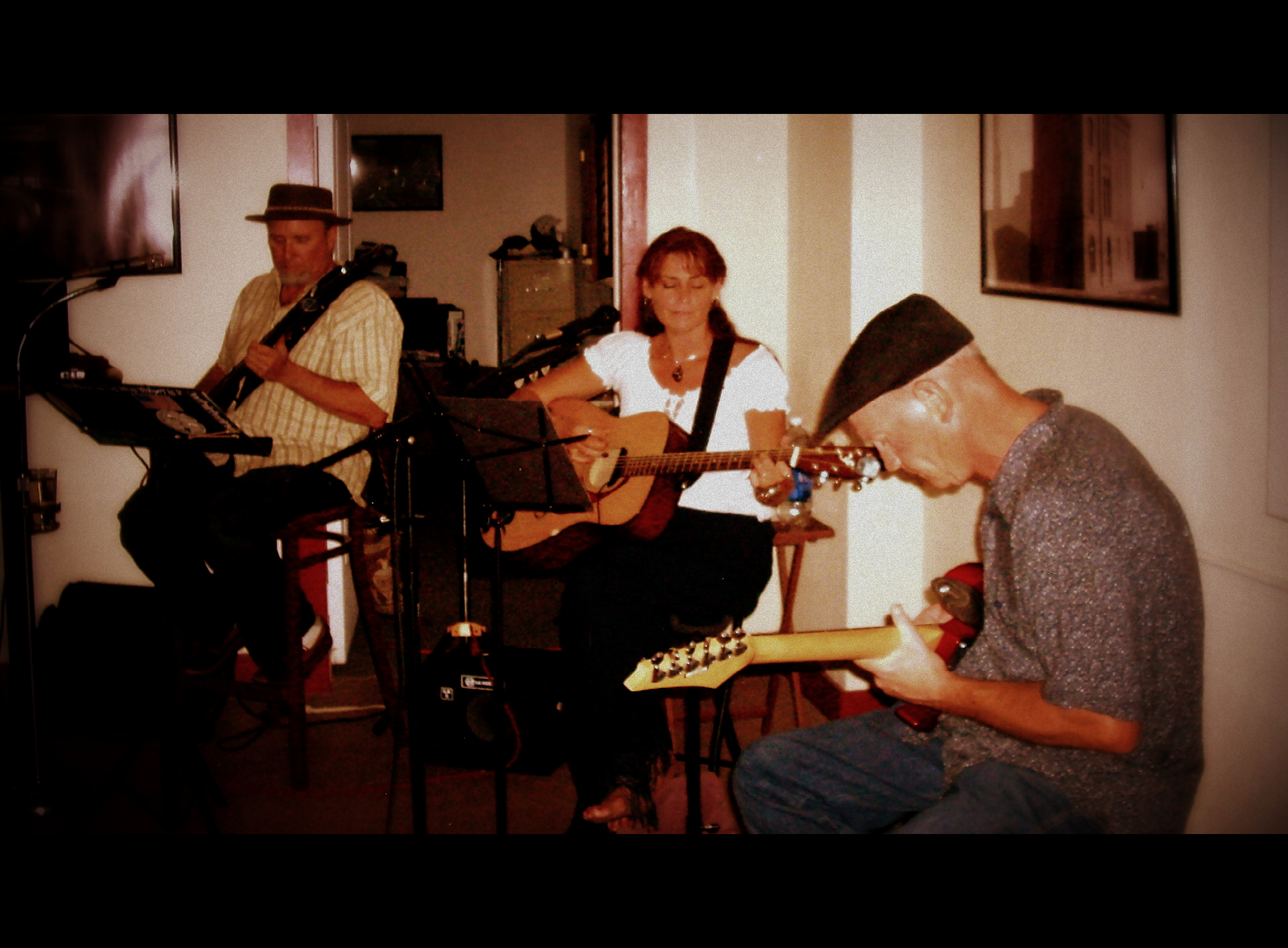
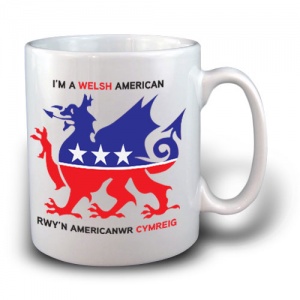


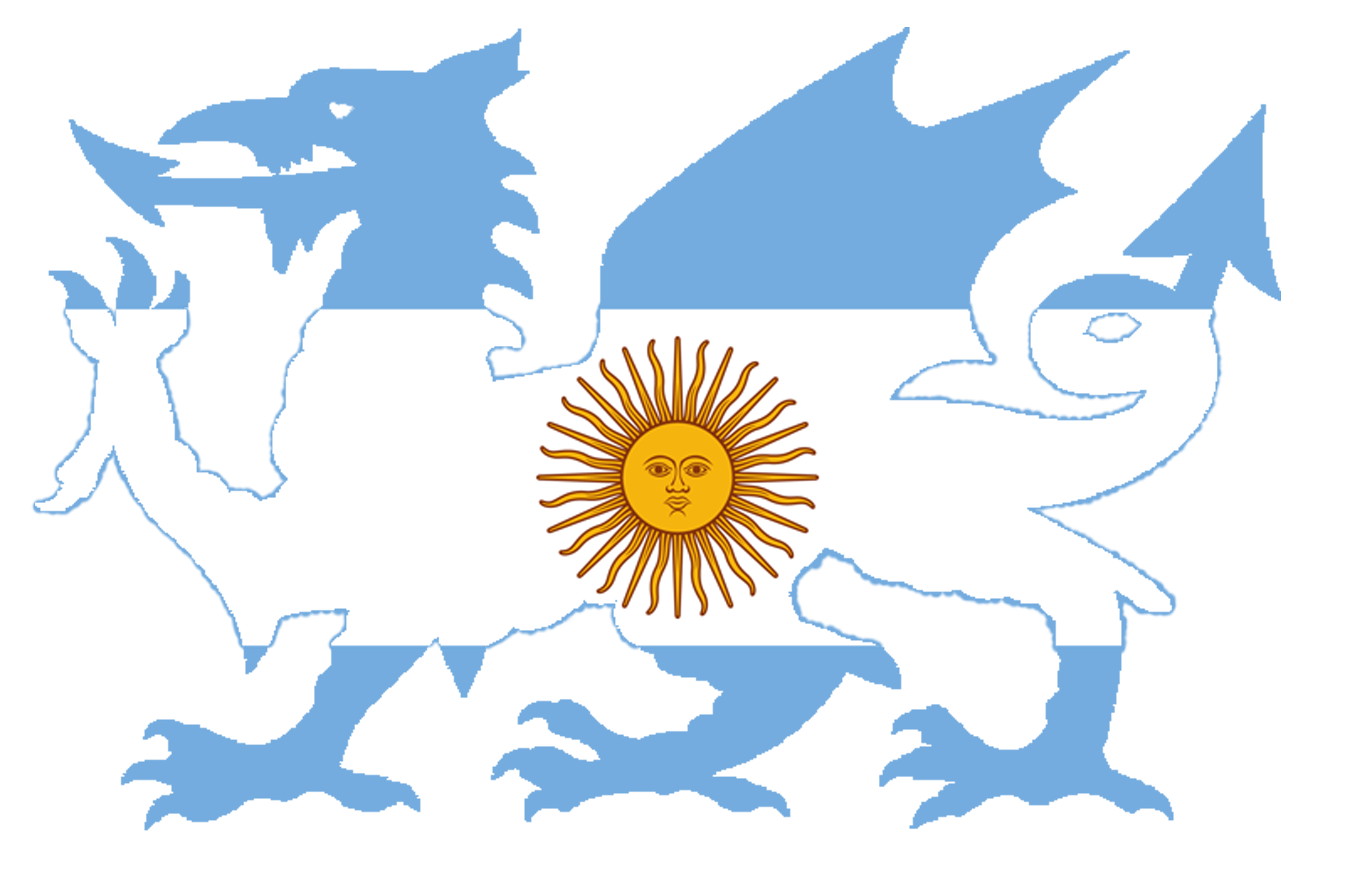



I repeat.....THIS IS NOT A COMMERCIAL SITE. It is not even self supporting and you have NOT answered Mona's point about the NAFOW Dragon. Indeed you seem incapable of doing anything except repeating the same tiresome assertions over and over again. You have not explained, or even attempted to, how the logo on this site or the Welsh American Bookstore represents any kind of insult. Nor have you explained the 'true meaning' of the emblem. If it has a true meaning I doubt you have any more insight into it than I do or the other people who have spoken in this thread and yet you arrogantly assume that you are the font of all wisdom on all matters Welsh and insist that your petty dislikes should be of paramount concern to all around you. Truly astonishing.